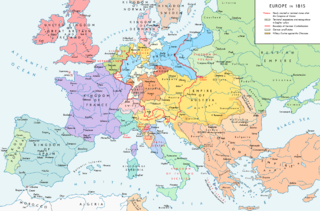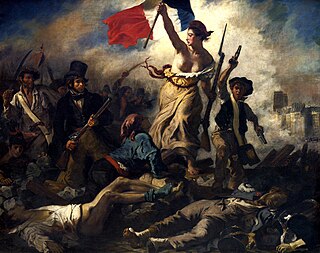 W
WThe Congress of Vienna of 1814–1815 was one of the most important international conferences in European history. It remade Europe after the downfall of the French Emperor Napoleon I. It was a meeting of ambassadors of European states chaired by Austrian statesman Klemens von Metternich, and held in Vienna from November 1814 to June 1815. The objective of Congress was to provide a long-term peace plan for Europe by settling critical issues arising from the French Revolutionary Wars and the Napoleonic Wars. The goal was not simply to restore old boundaries but to resize the main powers so they could balance each other and remain at peace. The leaders were conservatives with little use for republicanism or revolution, both of which threatened to upset the status quo in Europe. France lost all its recent conquests while Prussia, Austria and Russia made major territorial gains. Prussia added smaller German states in the west, Swedish Pomerania, and 60% of the Kingdom of Saxony; Austria gained Venice and much of northern Italy. Russia gained parts of Poland. The new Kingdom of the Netherlands had been created just months before and included formerly Austrian territory that in 1830 became Belgium.
 W
WThe establishment of a dominium maris baltici was one of the primary political aims of the Danish and Swedish kingdoms in the late medieval and early modern eras. Throughout the Northern Wars the Danish and Swedish navies played a secondary role, as the dominium was contested through control of key coasts by land warfare.
 W
WThe Eastern Bloc, also known as the Communist Bloc, the Socialist Bloc and the Soviet Bloc, was the group of communist states of Central and Eastern Europe, East Asia, and Southeast Asia under the hegemony of the Soviet Union (USSR) that existed during the Cold War (1947–1991) in opposition to the capitalist Western Bloc. In Western Europe, the term Eastern Bloc generally referred to the USSR and its satellite states in the Comecon ; in Asia, the Soviet Bloc comprised the Mongolian People's Republic, the Socialist Republic of Vietnam, the Lao People's Democratic Republic and the People's Republic of Kampuchea, the Democratic People's Republic of Korea, and the People's Republic of China. In the Americas, the Communist Bloc included the Central America and the Caribbean Republic of Cuba since 1961, Nicaragua and Grenada.
 W
WThis article covers worldwide diplomacy and, more generally, the international relations of the great powers from 1814 to 1919. The international relations of minor countries are covered in their own history articles. This era covers the period from the end of the Napoleonic Wars and the Congress of Vienna (1814–15), to the end of the First World War and the Paris Peace Conference. For the previous era see International relations, 1648–1814. For the 1920s and 1930s see International relations (1919–1939).
 W
WInternational relations from 1648 to 1814 covers the major interactions of the nations of Europe, as well as the other continents, with emphasis on diplomacy, warfare, migration, and cultural interactions, from the Peace of Westphalia to the Congress of Vienna. It is followed by International relations of the Great Powers (1814–1919).
 W
WThe Revolutions of 1830 were a revolutionary wave in Europe which took place in 1830. It included two "romantic nationalist" revolutions, the Belgian Revolution in the United Kingdom of the Netherlands and the July Revolution in France along with revolutions in Congress Poland, Italian states, Portugal and Switzerland. It was followed eighteen years later, by another and much stronger wave of revolutions known as the Revolutions of 1848.
 W
WThe Revolutions of 1848, known in some countries as the Springtime of the Peoples or the Spring of Nations, were a series of political upheavals throughout Europe in 1848. It remains the most widespread revolutionary wave in the European history.